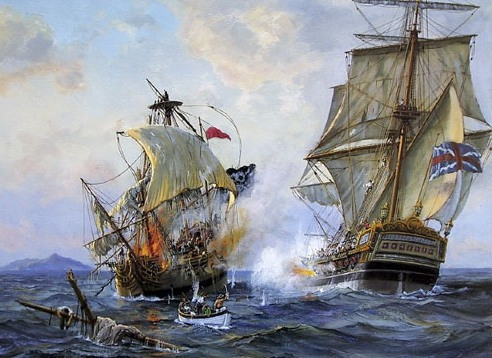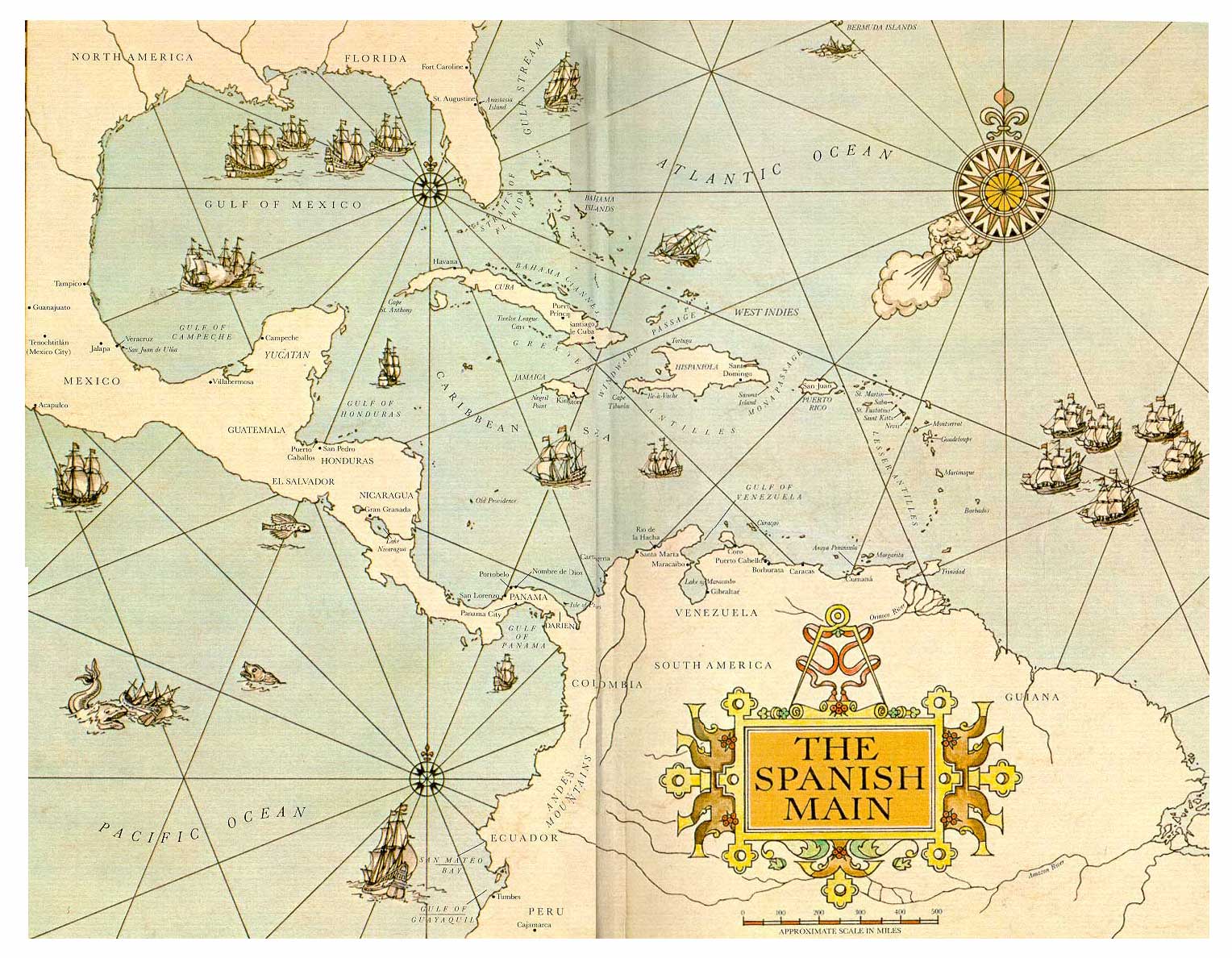I recently watched the film " Captain Philips " on Netflix. I had resisted for some time, given I am no longer a fan of Tom Hanks. But boredom got the better of me. I must confess to having enjoyed it and, as is so often the case, it sent me scurrying down rabbit holes. All to do with pirates.
I also feel it was a comment someone made here a few days ago about having enjoyed the book " Treasure Island " as a child. I then thought of " Kidnapped " another favourite from my early years of reading.
In my travels, I stumbled across a rather colourful character known as Black Bart, also known as Bartholomew Roberts.
He was one of the most successful and feared pirates of the "Golden Age of Piracy" in the early 18th century. So sit back and enjoy a tale of a pirate from over 450 years ago whose legend still lives on. I wonder how many of our politicians will still be celebrated 450 years hence for their acts of piracy against us? ( I just thought I would put that in for a touch of modern day relevance. )

Pirate Albo ..... OK, back to the story......
Black Barts real name was likely John Roberts, born in 1682 in Wales. He turned to piracy in 1719 and quickly rose to prominence after being forced into pirate service.
Roberts was originally a legitimate sailor before being captured by pirates off the coast of West Africa. Though initially reluctant, he joined the pirate crew and quickly demonstrated his skills, eventually being elected captain after the death of the previous pirate leader, Howell Davis.
Over a short period (1719–1722), Roberts captured over 400 ships, making him one of the most successful pirates in history.
He mainly operated off the coasts of West Africa, the Caribbean, and Brazil, targeting wealthy merchant vessels, including slavers and Spanish treasure ships. Black Bart was known for establishing a strict code of conduct for his crew, which included rules about gambling, desertion, and even the expected behaviour during battle. His leadership style was more disciplined compared to many other pirates.
Roberts was known for dressing in extravagant clothes, often wearing a red waistcoat and a large feathered hat. His charismatic personality, daring tactics, and bold nature made him a legend among pirates and a scourge for merchant fleets.
What was the Golden Age of Piracy? Well, it refers to a period between the late 17th and early 18th centuries (approximately 1650–1730) when maritime piracy was at its height. During this era, pirates roamed the seas, particularly the Caribbean, the eastern coast of North America, the western coast of Africa, and the Indian Ocean. It was a time of widespread lawlessness on the seas, and many famous pirates, such as Blackbeard, Black Bart and Captain Kidd, made their marks. ( More about Blackbeard, Captain Kidd and others in later posts. )

Many of the pirates during this time were former sailors from European navies, especially those of Britain, Spain, and France.
After wars like the War of Spanish Succession (1701–1714) ended, thousands of sailors were left unemployed, making piracy an attractive option. European empires, particularly Britain, Spain, and France, were expanding their territories, but they didn’t have enough naval power to protect their vast shipping routes, leaving them vulnerable to pirates.
Trade between Europe, the Caribbean, and the American colonies flourished, especially in goods like sugar, tobacco, spices, and gold. The West African slave trade also offered opportunities for pirates to attack slave ships and loot their valuable cargo. The Caribbean, in particular, became a hotbed for piracy. With its numerous islands and strategic location between Europe and the Americas, it was an ideal region for pirates to establish bases and launch raids. Nassau in the Bahamas was a famous pirate stronghold.

Many pirates began as privateers, legally sanctioned by their governments during wartime to attack enemy ships. After peace treaties were signed, some privateers continued their raiding activities illegally, becoming pirates.
Pirates typically sailed in small, fast ships like sloops and brigantines, which allowed them to chase down merchant vessels and escape larger naval ships. Pirate ships were often run democratically.
Crews elected their captains, who could be deposed if they were unsatisfactory. Pirate codes governed shipboard behavior and divided the spoils of their raids. Pirates created strongholds in places where they could avoid capture. Nassau (Bahamas), Tortuga (Haiti), and Madagascar were famous pirate havens where pirates could repair ships, sell their loot, and avoid authorities.

Notable Pirates of the Golden Age:
- Blackbeard (Edward Teach): Known for his fearsome appearance and notorious for blockading Charleston, South Carolina, in 1718.
- Black Bart (Bartholomew Roberts): One of the most successful pirates, capturing over 400 ships during his career.
- Captain William Kidd: Originally a privateer, he was tried and executed for piracy in a famous trial in 1701.
- Anne Bonny and Mary Read: Two of the most famous female pirates who sailed under the pirate captain Calico Jack.
The Golden Age of Piracy began to decline by the mid-1720s due to several factors:
- Increased Naval Patrols: European powers, especially Britain, began deploying more warships to hunt pirates.
- Pirate Pardons: Governments offered pardons to pirates who surrendered, reducing the number of active pirates.
- Stronger Naval Laws: New laws made it easier to prosecute pirates, and captured pirates were often hanged as a deterrent.
The Golden Age of Piracy remains a romanticised and popular period of history, inspiring countless books, movies, and myths about pirates.
There are historical accounts suggesting that Black Bart harbored a deep dislike for the Irish. This animosity was reflected in his pirate code, where one of the specific rules was that no Irishmen were allowed aboard his ships.
The reasons for this prejudice aren't entirely clear, but some speculate that it may have been related to past experiences or conflicts with Irish sailors or merchants. Others believe that it was more of a practical rule, rooted in distrust of Irishmen due to their reputation for siding with British authorities or because many Irish sailors were suspected of being spies or informants.
Black Bart was killed in a naval battle with the British warship HMS Swallow off the coast of Gabon in 1722. His death marked the decline of the Golden Age of Piracy, as his reign had been one of the last great threats to naval and merchant ships.Though his piracy career was relatively brief, Roberts' exploits left a lasting mark on pirate history.
Today, we have modern day Pirates. Those who take what is not theirs and do so by force. The theft of things like our countries, our homes and our freedom of speech. And they are such gentlemen while they do it.

















































